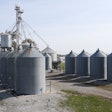
Looking back at news headlines involving the world’s largest animal feed manufacturers over the past 12 months, it has been a time of further consolidation, acquisition and expansion, together with significant investments in new facilities. These events have brought some changes in our annual list of big players by compounds production volume – not least, signaling renewed competition to be rated at the top for global size.
Livestock market developments internationally included a big jump in size for the poultry and pig sectors in Thailand, boosting the demand for feed from the Thai arm of the CP Group. We continue to place the group at the top of our list (see Table 1) when considering its compound feed output across all the countries where it is active. But its number-one position is under threat from close competitors in China.
Chinese contenders
CP’s nearest rivals until now have been mainly from the USA. However, Northern American tonnages generally showed no advance in 2010, whereas those for Chinese enterprises such as New Hope and Cofco keep increasing.
Recent statements about New Hope have indicated a current production capacity of about 20 million metric tons annually. As one of the largest suppliers of livestock products in China, its processing plants handle about 8.5 million pigs, more than 200 million poultry and 475 million litres of milk each year. Its turnover rose by 14.5% last year and net profit was up by almost 42%. Feed sales rose by more than 5%.
Besides its China-mainland mills, New Hope has 12 other feed plants located in Bangladesh, Cambodia, Indonesia, the Philippines and Vietnam. It has declared a five-year target of building up to 20 more mills outside China in a bid to reach the top of the world list of feed producers.
Six years ago, New Hope acquired 45% of the Liuhe Group, rated among China’s largest poultry processors and the biggest for feed output in its home province of Shandong. A minority stake in Liuhe offshoot Tianrun Feed Co of Qingdao was taken recently by the Marubeni Corporation of Japan, listed in our chart of top players through 2.5 million tons/year Japanese feed company Marubeni-Nissin.
Liuhe was again in the news when it signed an agreement to develop a venture in Hebei province intended to produce 100 million broilers annually, the same number of ducks and 10 million pigs, along with associated feed manufacturing.
Hebei is also where the giant Cofco agribusiness corporation has started an investment of RMB 200 million in a new feed project that will represent 200,000 metric tons of output even in the first of three planned phases. Cofco has its own Japanese connection with the announcement in 2011 that the Itoham and Yone-kyu affiliates of Japan’s Mitsubishi Corporation have become one-third owners of a new holding company to cover Cofco’s meat businesses.
Reportedly, Mitsubishi will partner with Cofco to massively increase the Chinese corporation’s current slaughter capacity for poultry and pigs. On feed, Cofco has said it aims to be producing 6 million metric tons annually within the next four to five years. The annual feed requirements of its existing Chinese pork operations already amount to some 12 million tons.
Other new ventures noted for Chinese integrators include an RMB 244 million plan by Tangrenshen Group of Hunan province to add two new feed projects as well as another six pig production complexes. China additionally has seen the opening of a second premix plant for the ADM Alliance Nutrition subsidiary of Archer Daniels Midland Company to provide capacity for exporting premixes to Pacific Rim countries and all Chinese provinces. The new Tianjin facility of ADM Dalian has an annual production capacity of 30,000 metric tons.
But perhaps the most significant news out of China came soon after reports of new national food safety concerns over contamination with melamine and the use of banned pig growth promoters. In the announcement, two compound feed manufacturers attached to Beijing-based Jiuzhou Dadi Biotech Group had become the first in the country to achieve globally recognised feed safety assurance certification through GMP+ International.
Records and awards
The past year has provided awards as well as records for several of the names on our list of the world’s largest feed manufacturers. Among organisations receiving national recognition has been De Heus of the Netherlands. It is celebrating its 100-year anniversary, having been founded in May 1911 by Hendrik Antonie de Heus in the Dutch village of Barneveld. At a civic ceremony in June, it was awarded the right to add the title of Royal to its name in honour of its status and increasingly international presence.
De Heus Voeders in 2010 produced more than 3 million metric tons of feeds at 30 locations, of which eight were in the Netherlands producing 1.92 million tons. Today, De Heus has activities in more than 45 countries, from Europe to Africa to China, where its strategic alliance since 2006 has been with another name on our list of top players — Wellhope Agri-Tech Co. Ltd. of Liaoning province in northern China, manufacturer of almost 2 million metric tons per year.
Poultry integrator DaChan claims to be the largest feed producer in Liaoning and one of the 10 biggest in China, and it manufactures feeds under brands including Dr. Nupak and DaChan from 15 mills in China, three in Vietnam and one in Malaysia.
In 2010, DaChan received an industry association award of being named on the list of top 50 Chinese feed enterprises as well as being in the top 20 nationally for broiler production. Feed manufacture accounted for about 43% of group turnover last year, so moving close to the 47% share from rearing and processing chickens.
Also recognised in 2010 was Dutch co-operative ForFarmers, which achieved multiple national honours by topping an AgriDirect survey of gains in feed market share, being named top feed supplier in the Netherlands by a Boerderij Business Top 100 report, and winning an award from financial journal Het Financieele Dagblad as one of the fastest-growing businesses nationwide. All this in a year when ForFarmers also reported the highest sales of compound feeds in its existence.
According to its annual report, the co-op’s five mills in the Netherlands and five in Germany gave ForFarmers a total output of 2.38 million metric tons of compounds or about 7% more than in the previous year. Most (46%) of compound feed sales were for pigs, with 29% for cattle and 22% for poultry.
Outstripping the market
Another European player to have achieved a new record for company production is the feed business of the Veronesi Group in Italy. In fact, by growing at a rate of 5% last year to more than 2.9 million metric tons, it also achieved double the growth rate of the national market. This occurred despite particularly difficult trading conditions, the company noted, starting from the second half of 2010 with the big jump in quotations of raw materials to heights seen previously in the period between 2007 and 2008. Clearly, high and volatile commodity prices have returned as the principal preoccupation of every feed manufacturer in all parts of the world.
Italy also brought an example of acquisition recently as Cargill moved to complete its purchase of Italian company Raggio di Sole, the producer of 700,000 tons of feeds per year at a network of four mills. This joined a stream of other Cargill announcements over past months that included buying Corporacion Pipasa, a meat processor in Central America with four feed mills in Costa Rica and Nicaragua. In Russia, the corporation officially opened its new LNB plant in Efremov to produce 50,000 tons of starter feeds, premixes and concentrates annually for pigs and poultry. In Ukraine, it will open a 50,000 metric tons/year mill at Kutsovka by the end of the year. Meanwhile, Cargill is among foreign-owned major feed players (others include CP, Uni-President and De Heus) pressing ahead with plans to build more mills in the hot-spot market of Vietnam.
Contenders consolidate
One name to have moved to a higher ranking on our list of top companies through consolidation is Agrifirm of the Netherlands. In January 2011 it launched Agrifirm Feed with a new, larger identity after completing the merger with fellow feed manufacturing Dutch co-operative Cehave Landbouwbelang. The Cehave connection brings in a production plant in China and several European countries. Agrifirm’s feed activities stretch from the Netherlands into Belgium, Poland, Hungary and also now Germany with its recent takeover of Bongardt GmbH and co-product subsidiaries Bonda and Profarm. In addition, the group owns premix operators Vitamex and Pre-Mervo.
France has offered other examples of change, such as when Terrena and Triskalia formed a joint venture from the Nutréa feed and animal production operation of the Unicopa group to create a new company called NNA. The partners hold 45% and 55% stakes respectively. They calculate NNA’s output at about 1.25 million metric tons per year.
French market leader InVivo NSA, born two years ago out of a fusion of the activities of Evialis with those of the animal nutrition and health division of France’s largest agricultural co-operative, has reported making some 3 million metric tons of complete feeds for all species from 48 production units situated in France and abroad. With about 1.4 million tons of this production coming from 20 mills in France, more than half the group’s feed volumes now arise internationally – notably in Spain, Mexico (where Malta Cleyton is its subsidiary), India, Vietnam (trading locally as Guyomarc’h), Indonesia, Brazil and South Africa.
In 2011 the Evialis France unit of the group entered into a 66% to 35% joint venture with southern French co-operative Capel to form Querial as a means of uniting their regional production facilities for compound feeds at one location, generating about 70,000 metric tons annually for poultry and ruminants. As InVivo said, the move has demonstrated once again how the animal feed manufacturing sector continues to go through a significant process of concentration.
















